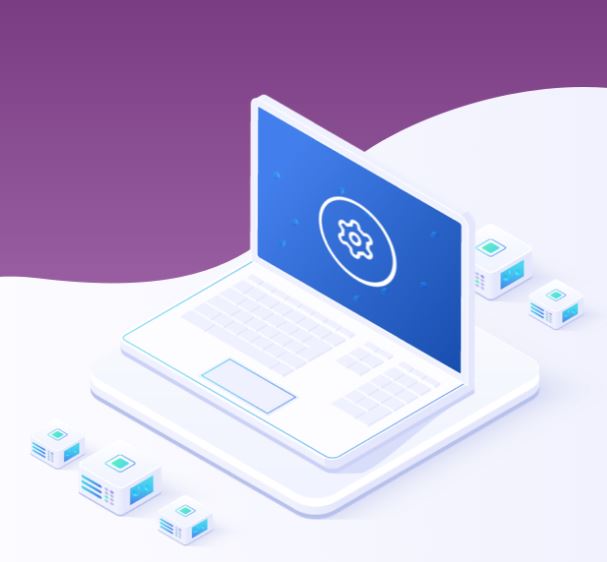NetApp has introduced new cloud management and optimization solutions, as well as an outsourced managed service for its virtual desktop infrastructure offering.
All three products are the latest manifestation of the company’s transition from storage hardware maker to cloud-first data management vendor. They also reflect both the accelerating adoption of cloud computing this year due to the coronavirus pandemic and the degree to which administering multi-cloud environments has become a mainstream headache for businesses of every size.
NetApp Cloud Manager, a new management platform announced today and available immediately, is designed specifically to help with multi-cloud management challenges. The system combines existing NetApp management tools for Amazon Web Services, Microsoft Azure, and Google Cloud Platform (GCP) behind a single UI and API.
“We’ve taken existing products but really unified them into a single platform,” says Ronen Schwartz, senior vice president and general manager of cloud volumes at NetApp. “You can basically manage storage and storage services across all clouds and on-premises.”
Faster, easier, and more consistent application of policies governing storage and backup are among the top benefits delivered by the new solution, Schwartz adds.
Another new solution, named Spot Storage by NetApp, is designed to help businesses build, deploy, and run containerized applications based on the Kubernetes platform without administering storage and data services manually. Drawing on technology NetApp acquired in June through its purchase of cloud data services vendor Spot, the system automatically configures and scales storage capacity in AWS, Azure, or GCP for peak performance and cost-efficiency.
“What we’re really trying to do is allow a [Kubernetes] developer, without really thinking about the details, make sure that they’re leveraging not just optimized compute but also optimized storage,” Schwartz says.
Pricing for the solution is derived from the savings produced by that optimization process. NetApp estimates that users will spend 70% less for storage on average, and charges about 30% of that cost reduction.
Spot Storage by NetApp is scheduled to enter general availability by the end of the year.
NetApp Virtual Desktop Management Service (VDMS), the new VDI managed service introduced today, lets users of NetApp’s Virtual Desktop Service outsource their provisioning, orchestration, and management duties in exchange for a monthly per-user fee. The service includes onboarding, end user training, and integration with NetApp SaaS Backup for Microsoft 365. In addition to freeing up in-house IT staff for other tasks, according to Schwartz, subscribers enjoy better performance and save money on VDI infrastructure.
“We will basically store the data used by the user more efficiently and then deliver it across the multiple VDI users in the performance that they need based on their usage patterns,” he says.
All three products unveiled today arrive at a time of swiftly rising investments in cloud applications and infrastructure reflected in NetApp’s own consumption trends. “I’m seeing more than 250% growth in data and applications managed through our cloud environment,” Schwartz says, noting that the figure has climbed 10 to 20% month over month for the last year. COVID-19, he adds, is only partly responsible for that pattern.
“We’re definitely seeing acceleration, but this is really an acceleration of megatrends that were already there,” Schwartz says.
NetApp bought Spot two months after announcing its acquisition of workspace-as-a-service vendor CloudJumper. NetApp Virtual Desktop Service is a re-branded release of CloudJumper’s Cloud Workspace Management Suite.
The Spot and CloudJumper purchases are part of a longer-term effort by NetApp to re-create itself as a provider of solutions and services for multi-cloud and containerized data management, rather than storage arrays.
“We are positioning ourselves as a Switzerland of clouds,” Schwartz says. “We are trying to give the customer the flexibility needed so that they are actually able to implement the right technology and the right cloud, and really answer the users’ requirements.”
More new products with important roles in that mission will arrive in the next nine months.
“You are going to see a set of exciting announcements from us around extending our support for containers and Kubernetes, and really owning a very, very large part of that of user experience,” Schwartz says. “You’ll see also a very significant alignment in hybrid scenarios, so making sure that the user can work on premise and in the cloud in a consistent experience.”
Other vendors have their eyes on the rapidly expanding market for container storage and backup. Veeam, for example, announced its $150 million purchase of Kubernetes backup and recovery vendor Kasten two weeks ago.
In multi-cloud administration, meanwhile, NetApp will face competition from SkyKick, which shipped a cloud management solution of its own a week ago, and industry newcomer Augmentt.














